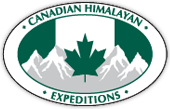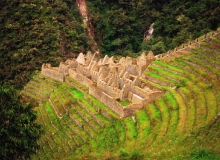Peru: Canyon Deep, Titicaca High
Map
View South America - Peru in a larger map
 After exploring ‘Machu Picchu’ and returning back to Cusco we leave next day for a unique experience and start with ‘Lake Titicaca’which is the highest navigable lake on earth at 12,580 feet altitude. Straddling the border between Peru and Bolivia, the Andean peoples refer to the lake as “The Sacred Lake”It sprawls over 3,500 square miles, fed by waters from the melting snows of the Andes.
After exploring ‘Machu Picchu’ and returning back to Cusco we leave next day for a unique experience and start with ‘Lake Titicaca’which is the highest navigable lake on earth at 12,580 feet altitude. Straddling the border between Peru and Bolivia, the Andean peoples refer to the lake as “The Sacred Lake”It sprawls over 3,500 square miles, fed by waters from the melting snows of the Andes.
At the time of the Spanish Conquest, one of the most important religious sites of the Inca Empire was located on the Island of the Sun. Titicaca was perceived by its ancient cultures to be an inland sea connected to the ocean, mother of all waters.
Later we fly in to Arequipa — known as ‘The White City’ as it is mostly built out of sillar (white volcanic stone) and sits 2325 Mts. high in the Desert Mountains of the Andes. With its one million inhabitants, Arequipa is the second biggest city of Peru.
The streets and walls of ‘sillar’ combined with interesting people make it a destination in itself. The main square, the Plaza de Armas is the most beautiful of the country. The magnificent “Cathedral” and the shopping malls are in colonial style. It is the city with the eternal spring. In the Historic Center, the architecture of the purest ‘arequipeño’ style of the 17th century, beginning with the superimposition of the Italian baroque, the Spanish silver-plating and Andean creativeness is worth a look.
 While in Arequipa we take the most spectacular excursion to the Colca Canyon — reportedly the deepest in the world, thought to be twice as deep as the Grand Canyon in the USA. There is something magic about discovering this Lost Valley high up in the Andes, miles from nowhere and surrounded by inhospitable peaks. It is much like stumbling upon a lush oasis in the middle of the Sahara, or the Gobi.
While in Arequipa we take the most spectacular excursion to the Colca Canyon — reportedly the deepest in the world, thought to be twice as deep as the Grand Canyon in the USA. There is something magic about discovering this Lost Valley high up in the Andes, miles from nowhere and surrounded by inhospitable peaks. It is much like stumbling upon a lush oasis in the middle of the Sahara, or the Gobi.
Colca Valley has been known by different names: The Lost Valley of the Incas, The Valley of Wonders, The Valley of Fire and The Territory of the Condor. It has even been called one of the Seven Natural Wonders of the World.
What brings increasingly more visitors each year, in addition to the awesome sights, are the Andean condors. The condor population of South America is unfortunately dwindling, but here in Colca Canyon, visitors can see them at fairly close range as they float on the rising thermals and scan for carrion far below them.
We support the great work of the Alma Children’s Education Foundation in Peru! Click on the logo to find out how you can get involved!
Detailed Itinerary
(Sun)
1
(Mon)
2
(Tues)
3
(Wed)
4
(Thurs)
5
(Fri)
6
(Sat)
7
Synopsis
Trip Grading:

Length: 7-day extension
Begins/Ends in Cusco/Lima
Land Cost: $1250 per person twin sharing. (Minimum 4 persons)
7-day extension to Inca Trail dates
Cost includes: All accommodation transport and meals ( AB = American Breakfast. L = Lunch. D = Dinner) as mentioned. Airfare from Juliaca – Arequipa – Lima.
NOTE: People taking this extension will only pay one way fare from Lima to Cusco (Approx. US$ 185) for the Inca trail trip
IMPORTANT: CANADIAN HIMALAYAN EXPEDITIONS reserves the right to modify or change any program itinerary to ensure client safety. The company does not accept any responsibility for maltreatment (damage) of equipment, loss, accident, unforeseen costs, unavoidable delays, services provide by intermediaries, nor direct or indirect acts which are out the company’s control.
You can also contact Canadian Himalayan Expeditions directly for more information.
Synopsis
Trip Grading:

Length: 7-day extension
Begins/Ends in Cusco/Lima
Land Cost: $1250 per person twin sharing. (Minimum 4 persons)
7-day extension to Inca Trail dates
Cost includes: All accommodation transport and meals ( AB = American Breakfast. L = Lunch. D = Dinner) as mentioned. Airfare from Juliaca – Arequipa – Lima.
NOTE: People taking this extension will only pay one way fare from Lima to Cusco (Approx. US$ 185) for the Inca trail trip
IMPORTANT: CANADIAN HIMALAYAN EXPEDITIONS reserves the right to modify or change any program itinerary to ensure client safety. The company does not accept any responsibility for maltreatment (damage) of equipment, loss, accident, unforeseen costs, unavoidable delays, services provide by intermediaries, nor direct or indirect acts which are out the company’s control.
You can also contact Canadian Himalayan Expeditions directly for more information.












